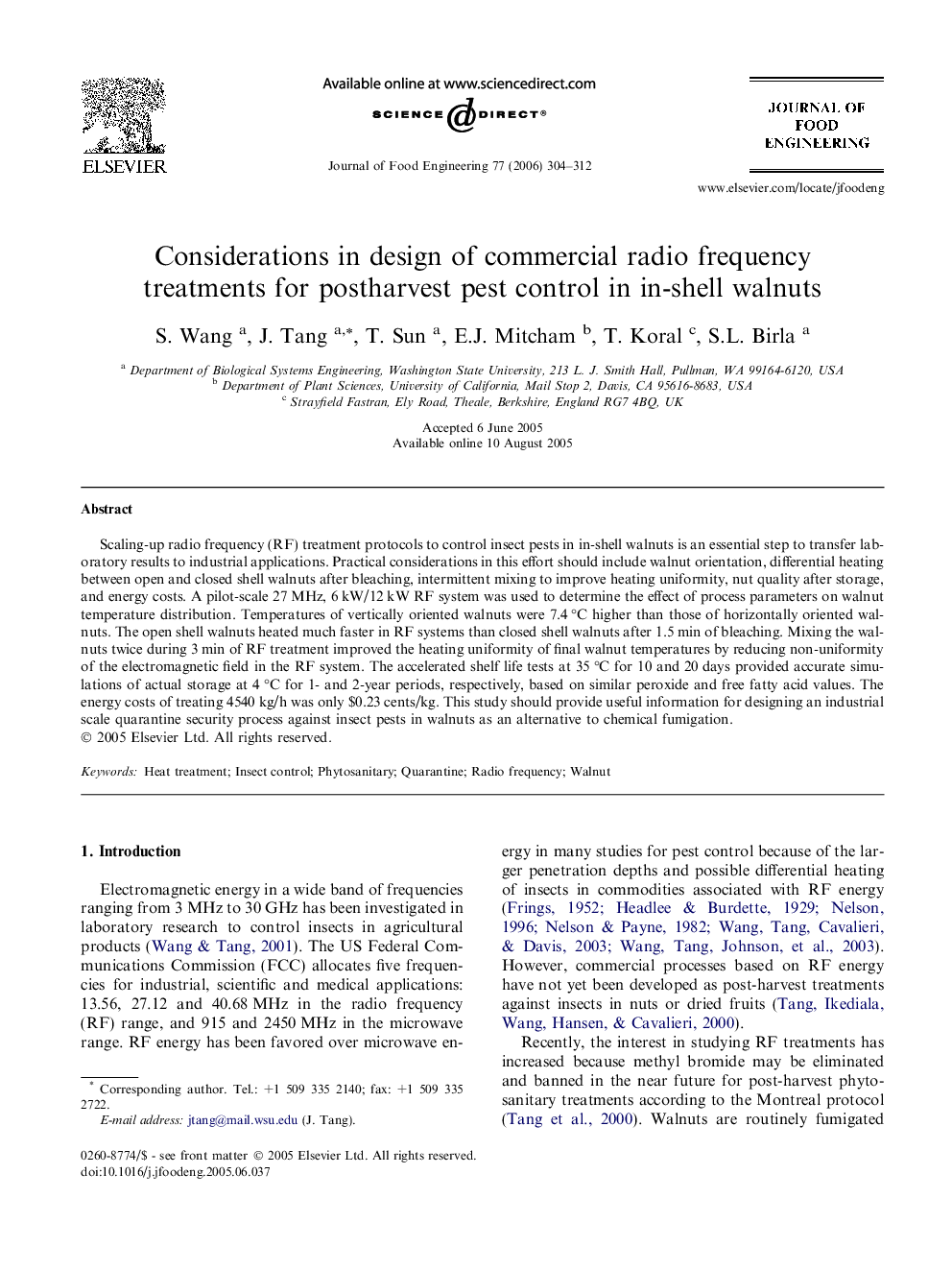| Article ID | Journal | Published Year | Pages | File Type |
|---|---|---|---|---|
| 226051 | Journal of Food Engineering | 2006 | 9 Pages |
Scaling-up radio frequency (RF) treatment protocols to control insect pests in in-shell walnuts is an essential step to transfer laboratory results to industrial applications. Practical considerations in this effort should include walnut orientation, differential heating between open and closed shell walnuts after bleaching, intermittent mixing to improve heating uniformity, nut quality after storage, and energy costs. A pilot-scale 27 MHz, 6 kW/12 kW RF system was used to determine the effect of process parameters on walnut temperature distribution. Temperatures of vertically oriented walnuts were 7.4 °C higher than those of horizontally oriented walnuts. The open shell walnuts heated much faster in RF systems than closed shell walnuts after 1.5 min of bleaching. Mixing the walnuts twice during 3 min of RF treatment improved the heating uniformity of final walnut temperatures by reducing non-uniformity of the electromagnetic field in the RF system. The accelerated shelf life tests at 35 °C for 10 and 20 days provided accurate simulations of actual storage at 4 °C for 1- and 2-year periods, respectively, based on similar peroxide and free fatty acid values. The energy costs of treating 4540 kg/h was only $0.23 cents/kg. This study should provide useful information for designing an industrial scale quarantine security process against insect pests in walnuts as an alternative to chemical fumigation.
